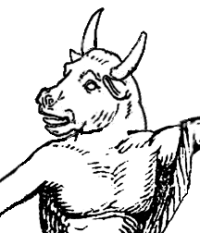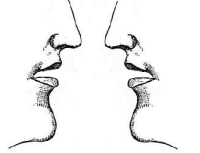I am unwell at the moment, but normal service will be resumed in a week or two.
– Peter

I am unwell at the moment, but normal service will be resumed in a week or two.
– Peter
 The latest edition of the JCS is devoted to personhood, a key issue which certainly deserves the attention. I’m afraid (or perhaps we should be glad?) there are a number of quite different and possibly incompatible perspectives on offer. I thought Eric T Olson’s animal problems, expounded in a careful and rather despairing paper (“What are we?”, were interesting, but not quite as bad as he thinks.
The latest edition of the JCS is devoted to personhood, a key issue which certainly deserves the attention. I’m afraid (or perhaps we should be glad?) there are a number of quite different and possibly incompatible perspectives on offer. I thought Eric T Olson’s animal problems, expounded in a careful and rather despairing paper (“What are we?”, were interesting, but not quite as bad as he thinks.
The issue addressed by the paper, as the title suggests, is that of the nature of human people. Is a person a substance or a process? Persistent over time? Composed of parts, spatially or temporally? Material or non-material? Are we, in fact, anything at all?
One possible stance is that we are simply animals. Probably most of us wouldn’t want to say that that is the end of the story, but Olson points out that there does seem to be, as it were, an animal corresponding to each of us. If we’re not the animal, and we do the thinking, what’s the animal doing? Thinking the same things in pre-established harmony? That seems strange – and if its thoughts are the same as ours, how could we be sure whose thoughts are which? Perhaps the animal doesn’t think – but why not: it has a brain and shows lots of signs of mental activity? The idea that the animal might have different thoughts of its own, not corresponding with ours, seems quite bizarre, and difficult to sustain given the way its behaviour matches our thoughts so well.
There’s something a little weird about this reasoning. If Olson chose to deny that the animal thinks, he would merely (!) be faced with the problem of why its behaviour matches our thoughts, which appears to be just a somewhat different slant on the classic mind-body problem as we know and love it.
But he doesn’t want to do that, and in fact he goes on to consider a re-application of similar reasoning. Because, after all, for each animal there is also a ‘lump of flesh’. The lump of flesh is intimately linked with the animal – if we were so inclined we might say that it constitutes it – but it can’t just be identified with the animal. After death the lump might persist in the absence of the animal, or given a partial carnal swap of some kind, the animal might survive longer than this particular lump. So again, then, is it the animal that does the thinking, the lump of flesh, or both?
I think the shift to another level give us the clue to the real nature of the problem. Aren’t we really just dealing with the well-established fact that the same thing can have different properties when described in different ways? This isn’t a unique feature of people or animals. My car may be referred to as the lump of metal in the drive, my prime means of transport, and my chief contribution to global warming, and it has slightly different properties in each case. But once understood, this sort of thing is not normally felt to be the kind of issue we need to lie awake at night fretting over.
There again, perhaps it’s a more bothersome issue when it applies to us. Our life seems to unfold on many different levels, yet consciousness seems undeniably single. Must we plump for one final way of describing ourselves in ourselves, with the others demoted to secondary status (is the subconscious where the real me is to be found?) or do we somehow have to think that our experienced unity is really a pandemonic chorus?
My personal inclination is to think that personhood resides in the single place where consciousness gives rise to agency, and that the animal (to describe myself in those unflattering terms) has, qua animal, a purely supporting role in that crucial process.
 I keep an open mind on the subject of qualia, the ineffable redness of red and the equally ineffable smelliness of smell, and I always read new arguments on the subject with interest. But if I’m honest, in my heart of hearts I believe that the problem, as normally formulated, embodies a misunderstanding. That redness you see isn’t a mysterious quale; it’s just some real, extra-theoretical redness. When Mary sees something red for the first time in her life, she doesn’t gain new information or knowledge, she just has an experience she has never had before. We should not be puzzled over the fact that colour theories do not themselves contain real colours, and so cannot convey them into minds any more than knowledge about an experience conveys the experience itself.
I keep an open mind on the subject of qualia, the ineffable redness of red and the equally ineffable smelliness of smell, and I always read new arguments on the subject with interest. But if I’m honest, in my heart of hearts I believe that the problem, as normally formulated, embodies a misunderstanding. That redness you see isn’t a mysterious quale; it’s just some real, extra-theoretical redness. When Mary sees something red for the first time in her life, she doesn’t gain new information or knowledge, she just has an experience she has never had before. We should not be puzzled over the fact that colour theories do not themselves contain real colours, and so cannot convey them into minds any more than knowledge about an experience conveys the experience itself.
I think we are right to be puzzled, nevertheless. There is a profound mystery here – it just isn’t the one we usually discuss. The redness of an apple is just real redness: but what on earth is that? What is real anything? When we try to distinguish reality from dreams, we often rely on epistemic arguments about the consistency and coherence of the real world, but those properties are not of the essence: there’s nothing to say a dream or delusion couldn’t by chance be consistent and sustained. The realness of reality must lie somewhere else, in some inscrutable region of meta-ontology.
Part of the problem, at least, is what we might call haecceity (with no particular commitment to Duns Scotus or others who have used the word): thisness: the property of being a particular thing and not something else. One of the deepest metaphysical questions we can ask is why everything is like this, instead of like something else: indeed, why is everything like anything, instead of nothing (which after all would require much less explanation)? Abstractions may sometimes be hard to get your head around, but when you come down to it there’s nothing so incomprehensible as the detailed particularity of ordinary reality.
We might look for some kind of cosmogonical explanation for why the world is the way it is. Now that we all know about chaos and have played with Conway’s Game of Life, it seems relatively plausible that quite a simple starting point for the Universe could have given rise to the buzzing complexity of the real world. To be real, then, would be to feature in the unrolling of some cosmic algorithm. But this seems unsatisfactory in more than one respect. First, the ultimate explanation is now deferred to the laws or rules which sustain the algorithm, whether they are simply the laws of physics or some unknown principles of maths, logic, or metaphysics. Apart from the fact that we now have the new and daunting problem of explaining how and why these laws work, we’re back with the old problem of putting the source of reality in a theory, the same sort of mistake we were making with qualia in the first place. Speaking for myself, I see theories and laws of nature as explaining and clarifying the innate tendencies of stuff: to say that the reality of the stuff arises out of the operation of the theory, or the laws, seems very like a category mistake.
Moreover, since it is a real thing, consciousness also has haecceity; but I find it impossible to believe that my own consciousness is merely a product of some rolling program: it may seem like a feeble recourse to intuition, but that just doesn’t seem a satisfying answer. It doesn’t explain why I am so definitely here and not there, or so definitely this person and not that one. I am not a zombie, in the philosophical sense, and my existence has a more solid character than any Platonic process. And let’s face it, it is all about me. I’m keen to understand the nature of reality in general, but like Descartes, I want my own reality to be clarified first and above all.
Perhaps metempsychosis is part of the answer. This post of Shankar’s a while back, drawing on Hindu ideas, proposed that qualia reside in a universal background entity, which gets plugged into the disparate personalities and bodies of all of us. I think some tricky stuff needs to be put in place to deal with that kind of split, but the idea of one soul, as it were, doing the work for all of us, is interesting. For one thing it clears up the tricky housekeeping side of reincarnation. Since deaths and births are not neatly paired up, reincarnation requires at least a kind of celestial waiting-room, and possibly a kind of time-travelling on the part of the transmigrating souls. But if one soul can animate an indefinite number of people simultaneously, the problem doesn’t arise. And why shouldn’t things work like that? That magic core which sustains my selfhood doesn’t seem to be dependent on the details of my body, my situation in history, or perhaps even my personality, when you get right down to it. So it doesn’t seem to have many differentiating characteristics. If it’s indistinguishable from other people’s magic core, then perhaps a rather slapdash application of Leibniz’s Law suggests it’s really the same. Perhaps in some sense all human experiences are experienced by the same essential me, either sequentially or somehow simultaneously; perhaps, in fact, I am talking to myself here? So I can conclude that it would indeed be odd and puzzling if I were an island of haecceity – because in fact I am nothing less than universal subjectivity.
Convinced? No, nor me, I’m afraid. In the end all that we’re left with, at best, is a persuasive denial of the very haecceity, so pressingly evident, which I wanted explained in the first place. I’m not convinced that my core of selfhood can be stripped of all its characteristics without losing its identity, and if it could that would identify me, not just with other people, but with everything. To some that might be a congenial conclusion, but to me again it looks as if the identity we wanted elucidated has run through our fingers. It seems more likely to me that my personality and the quirks of my physical history are constitutive of what I am even in the deepest sense: unfortunately of course, those quirky particularities are as hard to account for as my own thisness.
So it’s back to the metaphysical drawing board, I fear. Perhaps the next set of ideas about qualia will, after all, hold the vital clue?